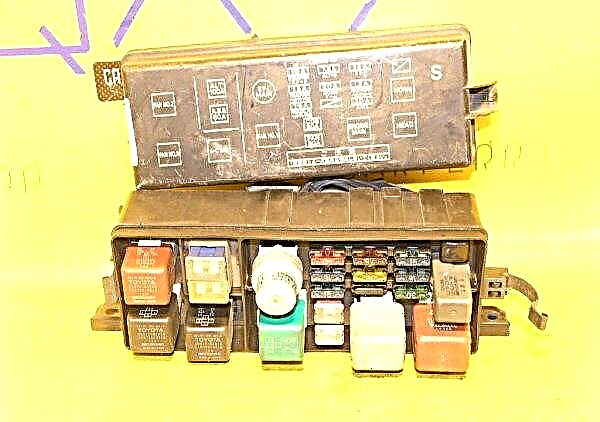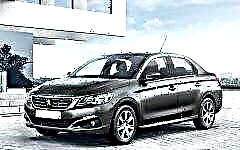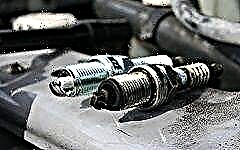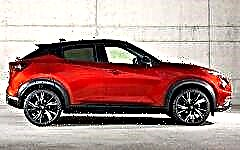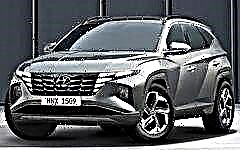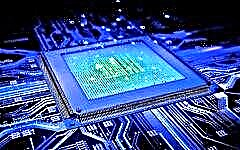

The content of the article:
- What is flashing
- Power increase options
- Classification of firmware
- How to reflash an engine
- Pros and cons of flashing
- Tuning price
Sooner or later, every car owner wants to get more power from the iron horse engine, as well as stable operation. There are a lot of options on how to increase power and what needs to be done for this, and each has both pros and cons. In a word, such a revision is considered tuning and the opinions of experienced drivers are divided into positive and negative.
Positive feedback from car owners regarding engine flashing includes an increase in power, more stable operation and a confident move. On the negative side, many say that an incorrect flashing of the engine, after a short period of time, will simply kill the unit and the car as a whole. To figure out what an engine flashing is and what it is eaten with, let's go through the main details of this unit tuning chip.
What is car engine flashing?

It would seem, what software could be in a car engine, where there are only iron parts. But do not forget about the electronics and control units, which are responsible for the different performance of the unit. Recently, it has become more and more popular to rewrite a car engine, or as the chip tuning unit is often called. Literally, the translation means setting the microcircuits located in the control unit, they contain a special program from the manufacturer that controls the unit. For her, the car engine is being reflashed.
Firmware is essentially a program, with its own set of algorithms, two or three-dimensional tables are used to control it, they are also called cards, in which certain data are written for the stable operation of the unit and the system as a whole. The number of cards may vary depending on the make and model of the vehicle. The newer the car and the more complex its electronics is, the more expensive and longer it will take to add the engine flashing. The main task of flashing the engine is considered to increase power and torque. Plus such tuning, that in addition to the program, in fact, there is nothing to change and no need to modify, and the output will get more horses and improved torque.

One more question for car owners: which engines need to be flashed? The rapid development of the automotive industry and the refinement of many units showed that anyone with an electronic control unit can reflash an engine. Not only automobile units, but also motorcycles, yachts, boats and other modern equipment began to be subject to such tuning.
From the above information, it becomes clear that flashing a car engine is a change in the software of the electronic control unit of the machine unit. The main task of flashing the engine is considered to be an increase in the power of the unit and torque, stable operation, and a decrease in fuel consumption.
How to increase engine power?

All motorists are trying to increase engine power, be it a couple of horses or several dozen horsepower. From the very beginning of the appearance of machines, this idea has always been in the first place.
Today, an increase in the power of a car engine is divided into mechanical and software (flashing the car engine).
Mechanical methods include making changes to the cylinder block, replacing engine parts with non-standard components, modified and improved. Also, the mechanical superstructure of the fuel system and the completion of the exhaust system. Some car owners significantly modify their cars, replacing entire components, for example, the gearbox, chassis, exhaust system (they remove the catalyst, install non-factory mufflers, and also extinguish various sensors and limiters).
Nevertheless, the mechanical ones are replaced by flashing to increase the power of the unit. As a rule, this is the same engine flashing or a complete replacement of the control unit in a pair with the on-board computer. The engine flashing can be stationary by connecting via the OBD diagnostic port, or the control unit can be removed and connected directly to the computer. There are times when you have to solder the control chip, reflash it in a special programmer or change it to a new one, but the cases are quite rare and an experienced craftsman is required. And the owners of such cars do not always decide upon hearing the specifics of the procedure.
What kind of car firmware are there?

With the development of electronics in cars, firmwares for reflashing the engine began to develop. It's no secret that the units of modern cars are, in fact, separate units that are controlled by electronics. Depending on the wishes of the car owner, the firmware is divided into two main classes, those that are designed to reduce fuel economy and those that contribute to an increase in power and torque. In addition to the two main firmwares, three other firmwares are distinguished, in total, five different options are obtained for reflashing a car engine.
The most common firmwares are:
- Class "A" - intended for non-standard equipment in the car, often these are limited versions of car models;
- "B" or in other words Butan, a firmware designed to improve the engine's performance on liquefied gas and use it as fuel. Such a flashing is used during the installation of gas equipment on modern cars, where it is necessary to modify the standard car program;
- the third option "C" - is used in the case of installation of a non-standard camshaft in the car engine, each model has such a series or batch of cars;
- the penultimate "D" stands for Dynamic, such a flashing of the engine is designed to increase power and torque, in another way it is a change in the dynamics of the car;
- the last class "E" - firmware for reducing fuel consumption and tuning the engine economy, also referred to as Economical.
As a rule, cars with an on-board computer are subject to engine flashing, it is these cars that have a special control unit and a factory-designed mechanical unit for controlling the unit.
The process of flashing a car engine

At first glance, flashing a car engine seems like a simple procedure. I connected to the control unit via a special cord, chose the appropriate firmware and started the process. But in reality, if you want to achieve the expected result, you will need to work and spend more than one day of time.
The first thing that begins the process of flashing a car engine is to determine the purpose of the flashing (saving fuel, increasing power or modifying the unit). To carry out such a procedure, you will need a stationary computer or laptop (most often) with previously configured software and a special cable for connecting to the OBD port of the car.Depending on the make and model of the car, the control unit can be located in different ways, in front under the panel, outside under under the hood, under the seat or even in the trunk of the car. But most often it is located in the front of the car, it is both convenient and accessible for reflashing a car engine.It is better not to describe the process of reflashing a car engine, reading, revising and refilling, since it is different for each brand, model and even the year of manufacture or submodel of the car. The main stages of flashing a car engine are adjusting the factory firmware and testing the results of the revision.
It will not be superfluous to take measurements before reflashing the car engine, that is, its acceleration dynamics, fuel consumption and other parameters, and carry out a similar procedure after the engine tuning chip. In this case, it will immediately become clear whether there are positive results of such a flashing of the engine or the indicators have only worsened. You should never exclude the case when you turned to a bad specialist and instead of improving the parameters, they will only worsen, and the flaws in the engine flashing will kill the unit and components over time.
What are the pros and cons of flashing a car engine?

As with any process of changing and interfering with factory settings, there are two sides, positive and negative. Experts will immediately say about the advantages of flashing a car engine and will praise them as much as possible, but they are often reluctant to talk about the disadvantages, since the consequences can be unpredictable.
First, I will consider the positive side of flashing a car engine. Today, the time of engineering vehicles is considered and it is difficult for a modern person to imagine a car without an on-board computer or control system. The ECU (electronic control unit) is most often subject to flashing to improve the dynamics parameters.
Pros of flashing a car engine:
- improving the dynamic characteristics of the machine, increasing the sensitivity of the accelerator pedal, as a result, facilitating the process of controlling the machine;
- the acceleration of the car on the track is much better, which allows you to maneuver in the stream;
- those who bought a new car from the salon, after a few years get used to it and complain that the car is getting slow, not enough power and not at all what they bought. In this case, flashing solves such problems;
- flashing a car engine is considered the simplest and at the same time a fairly effective way to improve the dynamic characteristics of a car, without interfering and modifying the engine;
- Re-flashing the engine allows you to adjust the unit and the car as a whole for the modified system, non-standard hardware, turn off the catalyst, add spare horses (often many engine manufacturers come with a good supply of horses that they do not fit into the technical characteristics of the car).
This is a minimal list of what are the advantages of flashing the engine and how you can improve the parameters of the car. Nevertheless, there are also disadvantages, experts often do not really want to talk about them. For some machines, this is less detrimental, but for others, it is critically fatal. As a general rule, the more electronics and the more complex the mechanism of the machine, the more significant the results of the engine flashing will be.
The main disadvantages of flashing the car engine:
- the first and most common disadvantage of flashing a car engine is a breakdown of the unit itself. When adding power, the fuel management system is often re-flashed, in which case the mixture becomes "rich" or "lean" and not every specialist can adjust it programmatically. When setting up the system, you need to know well the characteristics of your car, its mileage and the nuances of the equipment, but not all specialists will do this, because this is a waste of their time. As a result, you can get a lot of trouble, from a clogged catalyst, to burnout of valves, pistons and crankshaft wear;
- any re-flashing of the engine reduces its service life by at least 4%;
- Re-flashing the engine to reduce fuel consumption also entails a deterioration in the operation of the unit and will not always show improved fuel consumption. Some "handicraft" specialists come up with the idea of reflashing the on-board computer, thereby shifting the savings indicators by a certain division. Then on the screen the indicator will show the fuel economy, but in fact the consumption will remain the same or even worse will increase;
- the price of such a flashing of the engine depends on the brand and model, and an inexperienced fan of easy tuning can get by at least 5% of the cost of the car;
- shutdown of individual vehicle components by flashing the engine, usually this concerns the limitation sensors and the catalyst. It is highly discouraged to turn off the catalyst sensor, since you simply will not know if it breaks down, and the car will significantly lose power or stop starting altogether. A clogged catalyst can not only lead to a clogged exhaust system, but also completely take the engine out of working condition. As a result, valves may burn out or a camshaft depletion will appear;
- the most unpleasant minus that can be after the engine reflashing is the failure of the automatic transmission, it has its own control unit and the asynchronous operation of the nodes will quickly disable the shifting system and gears. Many people know that repairing an automatic transmission is not cheap, and sometimes it is even more expensive than repairing an engine.
Such a minimal and unpleasant list of cons of flashing a car engine exists for each brand and model. Therefore, it is worth considering several times whether it is worth reflashing the car engine and what consequences can be expected. If you decide to take such a step, then do not be lazy to find a good specialist with a proven reputation - this will be a guarantee that in the future such improvements will not come out sideways for the car and not hit the financial part.
Car engine reflashing price

The calculation of the price for flashing a car engine will primarily depend on the make, model and year of manufacture of the car. Equipment and electronics control systems play an important role. The price of the firmware will depend on its purpose: increasing power, decreasing fuel consumption or tuning for new units.
If you decide to reflash the car yourself, then you need to collect everything you need for this. The average start for the simplest firmware starts at $ 20-50. In addition, you need to purchase a cable to connect to the car control unit, for each model it may differ, in particular, also by the year of manufacture of a particular model.

The price of such a cable starts at an average of $ 10, and the maximum is about $ 150-200. Instead of a cable, you may be offered a special connector that reads and transmits data to a computer via Wi-Fi or Bluetooth. A complete kit for flashing the engine will cost about $ 300-350, taking into account all the necessary programs. In the case when it is not possible to understand all the details of the flashing or there is simply no desire, you can contact the specialists. The price of one such reflashing of a Mercedes-Benz Vito car engine starts at $ 250, for a BMW E39 - about $ 300.
The final decision whether a car engine needs to be re-flashed or not rests with the car owner. Sometimes a slight addition of power can lead to irreversible malfunctions of the components, so it is better to weigh the pros and cons ten times, and reflash the car engine once.

